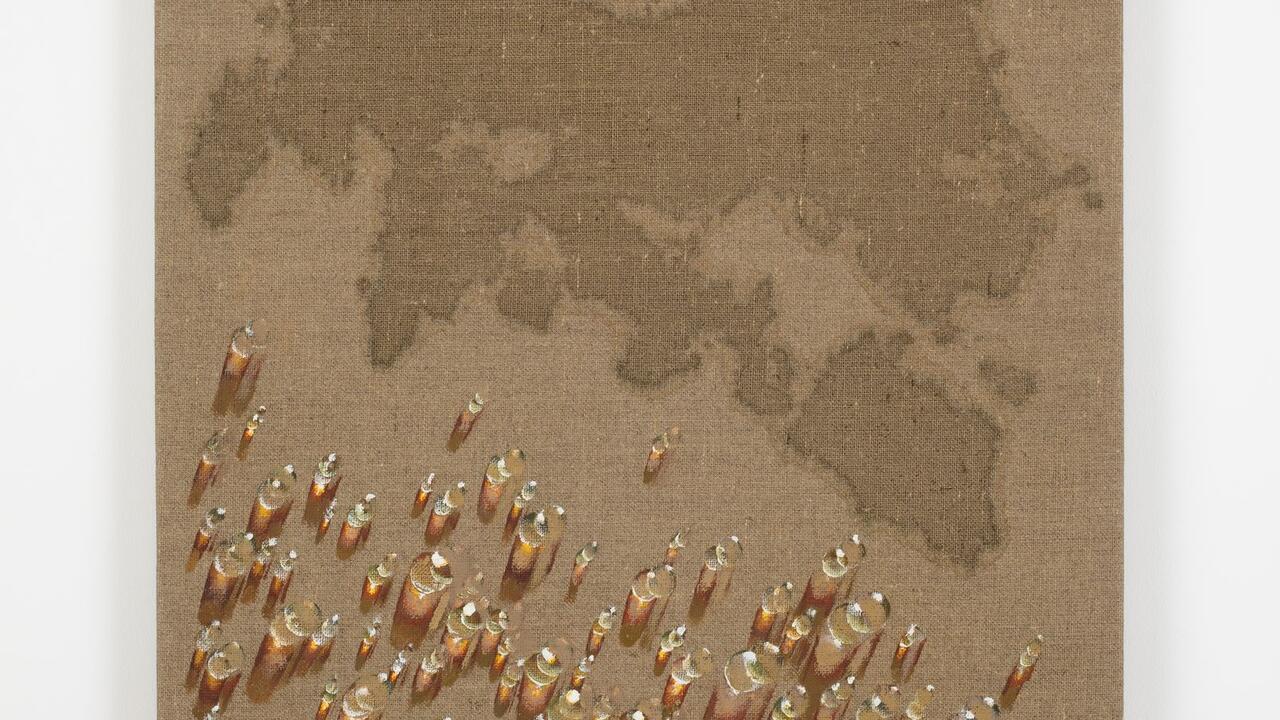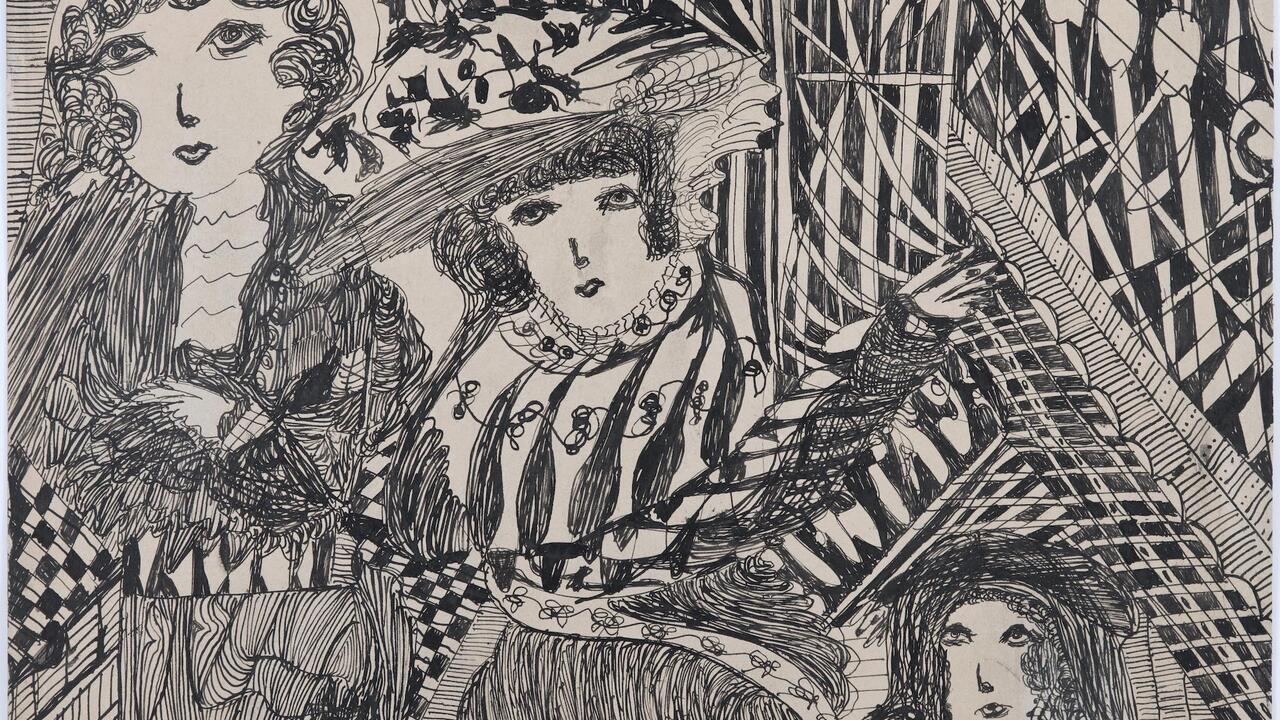Pierre Bonnard to Paula Rego: Giants of Art History on Frieze Viewing Room
Explore artists who revolutionized the global canon, from 17th-century women pioneers to Jean-Michel Basquiat and Park Seo-Bo
Explore artists who revolutionized the global canon, from 17th-century women pioneers to Jean-Michel Basquiat and Park Seo-Bo

Pierre Bonnard, Le corsage à carreaux, 1892
Oil on card affixed to panel, 23.5 × 17 cm. Presented by Waddington Custot

Pierre Bonnard’s tender portrait Le corsage à carreaux (1892) captures his sister Andrée Terrasse with his characteristically light painterly touch. Waddington Custot’s curated display of Les Nabis shows how artists like Bonnard, Édouard Vuillard and Maurice Denis mined deep emotion from simple domestic scenes, championing the poetry of the everyday.
Mary Beale, Charles Beale (1631–1705), late 1650s
Oil on paper, laid on panel, 31.8 × 26 cm. Presented by Philip Mould & Company

Mary Beale’s intimate portrait of her husband Charles is one of her earliest surviving works. Living and working just off Fleet Street in London in the 17th century, Beale was radical in her approach to both art and marriage.
Jean-Michel Basquiat, Red Joy, 1984
Acrylic, oilstick and xerox collage on canvas, 218.5 cm x 172.5 cm. Presented by Omer Tiroche

Jean-Michel Basquiat’s graffiti-inspired strokes capture the chaos and rawness of urban existence. Omer Tiroche’s dual show reveals the influence of Jean Dubuffet’s paintings on Basquiat, with both artists hailed as visionaries for their experimental approaches to figuration.
Paula Rego, The Mermaids, 2016
Pastel on paper on aluminium, 160 × 120 cm. Presented by Hazlitt Holland-Hibbert

Paula Rego interweaves personal experiences with folkloric symbolism. The Mermaids is based on Hélia Correia’s tale ‘Bastardia’ (The Boy who Loved the Sea), which recounts the journey of a boy who believes his father is the sea. Rego translates the story’s blend of innocence and brutality into a fantastical scene that portrays the boy on a bed of sand, facing his impending death, surrounded by grotesque apparitions.
Lee Krasner, Present Conditional, 1976
Collage on canvas, 182.9 × 274.3 cm. Presented by Eric Firestone

In the 1970s, Lee Krasner cut up her early nude charcoal and oil sketches, repurposing them in large multi-panel constructions. Unlike her collages from the 1950s, which are characterized by their torn edges, Present Conditional (1976) from the series ‘Eleven Ways to Use the Word To See’ is sharply cut. Krasner asks, ‘Why destroy perfectly good drawings?’ concluding, ‘My collages have to do with time and change.’ This series tells of the evolution of Krasner’s process over time, developing the grid format she first used while at Hoffman School.
Naum Gabo, Linear Construction in Space No. 1 (Variation), 1976
Perspex with nylon monofilament, 22 × 22 × 10.5 cm, unique edition. Presented by Osborne Samuel Gallery

Sculptor, designer, painter and printmaker Naum Gabo has influenced generations of artists and architects globally: he contributed to the early development of constructivism in Moscow, collaborated with the Bauhaus school in Berlin and joined artist communities in London and St Ives. This delicate construction in perspex and nylon filament bears the inscription ‘FOR MIRIAM’, Gabo’s wife.
Rachel Ruysch, A Still Life of Fruit, 1684
34.5 × 31 cm, oil on canvas. Presented by Bijl-Van Urk Masterpaintings

Rachel Ruysch is considered the most successful Dutch female artist in history. A Still Life of Fruit (1684), one of Ruysch’s early works, exemplifies her intricate brushwork, with dew drops adorning the grapes and the velvet fabric deftly cast in deep, shadowy folds.
Auguste Rodin, L’Ombre (The Shade). Conceived in 1880, cast in 1963
Bronze with green, black and brown patina, 95.2 × 53.9 × 29.4 cm. Presented by Bowman Sculpture

L’Ombre (The Shade) was originally designed in 1880 for The Gates of Hell, Auguste Rodin’s masterpiece inspired by Dante’s Divine Comedy. In Dante’s ‘Inferno’, the Shades are the damned souls who stand at the entrance to hell. Only 14 casts exist of this figure, who both gestures and folds downwards, pointing towards the underworld.
Park Seo-Bo, Ecriture No. 911104, 1991
Acrylic with Korean hanji paper on canvas, 18 × 26 cm. Presented by Johyun Gallery

Park Seo-Bo was a founding member of the dansaekhwa movement, emerging in 1970s post-war Korea. He began his ‘Ecriture’ series in the 1960s, developing a unique visual language of repeated pencil lines over wet painted surfaces, gradually evolving from monochrome to colour.
Further Information
Frieze London and Frieze Masters, 9 – 13 October 2024, The Regent’s Park.
Tickets to the fairs are on sale – don’t miss out, buy yours now. Alternatively, become a member to enjoy premier access, exclusive guided tours and more.
To keep up to date on all the latest news from Frieze, sign up to the newsletter at frieze.com, and follow @friezeofficial on Instagram, X and Frieze Official on Facebook.
Main Image: Milton Avery, Untitled (Young Artist), c.1938. Oil on canvas, 69.8 × 90.8 cm. Courtesy: Kasmin


















